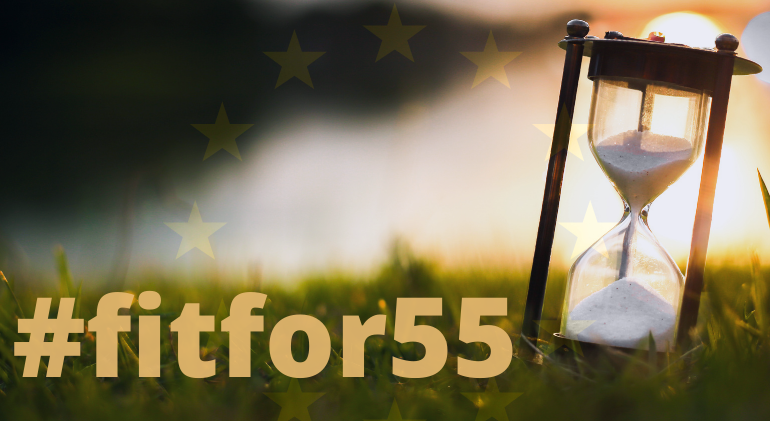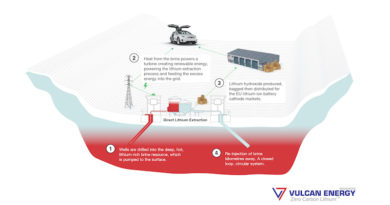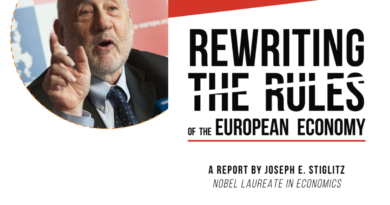
Making the Most of Slovenia’s EU Council Presidency to Accelerate the Green Transition
The beginning of this year’s second semester – the semester of Slovenia’s EU Council Presidency – was marked by two publications: the package of the European Commission’s legislative proposals »Fit for 55« and IPCC’s 6th Assessment Report by the Working Group I. If dire forecasts in the report are too abstract, the extreme weather events – not in some distant parts of the world, but in the heart of Europe, such as flooding in Germany, Belgium, Romania and elsewhere as well as wildfires in Greece just this summer – should be palpable enough to see that action is needed now.
But what action? On the international scene, virtual June Session made some progress on the road to COP26, but still only modest one as regards to crucial issues of Art. 6 of the Paris Agreement, finance and common timeframes. Much more daringly, building on the European Green Deal, the Commission’s Fit for 55 proposals thoroughly revise existing energy and climate frameworkwith an aim of economy-wide domestic greenhouse gas emissions reduction by at least 55 % by 2030 (compared to 1990 levels). The 55 % reduction target is enshrinedin the European Climate Law and is thus legally binding. The status of 2030 and 2050 targets as a legally binding norm is in itself an important milestone carrying fundamental European environmental principles. This is where the “Fit for 55” comes in with its detailed measures to implement these climate targets and this is where the hard work actually starts.
Slovenia is currently holding the presidency of the Council of the EU in the short second semester, in which the “Fit for 55” was published and in which COP26 will take place in Glasgow.
This of course would pose a significant burden for any Member State, not just a smaller one like Slovenia. Having said that, Slovenian Presidency is in a unique position to make use of the new legal landscape provided by European Climate Law, as well as the momentum of the post-pandemic recovery.
Fit for 55 package is a comprehensive and complex set of proposals encompassing all sectors and all Member States. It’s an evolution of the existing climate framework, strengthening of existing policies and the careful addition of new ones. Our discussions in the Council will be framed by the principles agreed by the European Council in December 2020, and reaffirmed in May 2021. The close interlinkages between the individual legislative proposals have to take these principles into account if they are to deliver on the higher greenhouse gas emission reduction ambition.
Environment ministers have already started the discussions on Fit for 55 proposals in considerable detail at the Informal ministerial meeting in Brdo pri Kranju in July. Informally discussing proposals in the competence of ENVI Council, the ministers highlighted that the ETS remains the cornerstone of the EU climate policy. As regards to the proposed expansion of emission trading to buildings and road transport many of them stressed the importance of avoiding energy and mobility poverty.
A crucial role here will be played by the new Social Climate Fund. As regards to the proposal for the revision of the Effort Sharing Regulation, the ambitious new national targets were underlined as well as significant efforts needed in order to reach them.
It was also stressed that “Fit for 55” is not just environmental but is also an industrial vision for the future.
Within the informal debate on the COP 26 ministers underlined that 2021 is a crucial year to keep 1.5 degrees within reach. Delegations stressed the importance of updated National Determined Contributions (NDCs) and Long-Term Climate Strategies. Unfortunately, several major world economies still have not updated their NDCs in a meaningful way. Another element that needs to be successfully resolved in Glasgow is the completion of the Paris Rulebook (Article 6) and strengthening transparency.
Reaching climate neutrality is a long-term challenge and it is EU’s vision that this must be done together with an economic transformation that is fair and swift. Our goal is to reach a balanced agreement that will lead to the achievement of the agreed climate goals while dividing the burden fairly and cost-efficiently.
This means that all Member States and all economic sectors should contribute to the achievement of the goal in a commensurate way. At the same time, we must maintain the competitiveness of our economies and ensure that no household will be left behind in the green transition. Furthermore, we need to reflect on the question of whether and if at all the landscape of EU’s climate governance is sufficiently effective for implementing the long-term 2050 objective.
Finally, it cannot be stressed enough that the precondition of green transformation is a lasting recovery in all sectors of the economy and public life. To mitigate the socio-economic consequences of the COVID-19 pandemic, one of the priorities of the Slovenian Presidency is the effective implementation of the Next Generation EU instrument and the Recovery and Resilience Facility.
It is our wish to make the most of the implementation of these two instruments to accelerate the green and digital transition, which will create jobs, strengthen the resilience of our societies and ensure the health of our environment.
A complex negotiation process lies ahead of us in the coming months both within the Council and at the COP 26. A process in which we must ensure the groundwork for just, balanced and fair transition for all, both in the EU and in the world.




